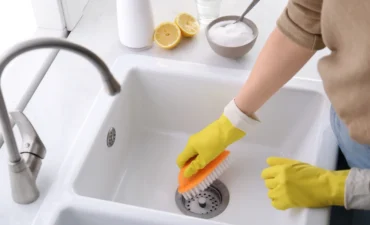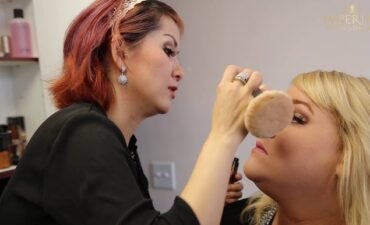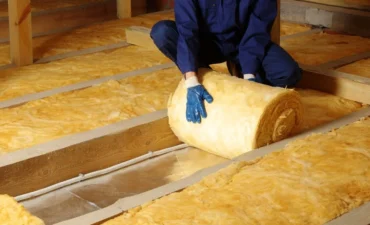As energy efficiency and sustainability continue to be top priorities for homeowners and builders, eco-friendly insulation is gaining popularity. Unlike traditional insulation such as fiberglass or foam, which often contains synthetic chemicals and has a high carbon footprint, green insulation materials offer comparable—if not better—performance while being better for your health and the environment.
This guide will explore the top sustainable insulation options available today, including the benefits of each and how they contribute to a more energy-efficient, comfortable, and environmentally responsible home. If you’re ready to upgrade your insulation, Century Insulation provides expert help to find the perfect eco-friendly solution for spray foam insulation Roseville tailored to your needs.
Why Choose Eco-Friendly Insulation?
Eco-friendly insulation offers a host of advantages beyond just being good for the planet. Homeowners are turning to sustainable materials for the following reasons:
- Energy Efficiency: Green insulation helps retain indoor temperatures, lowering heating and cooling costs.
- Improved Indoor Air Quality: Many eco-friendly options are non-toxic and free from harmful VOCs.
- Sustainability: These materials are typically made from recycled, renewable, or biodegradable sources.
- Long-Term Durability: Many green insulation materials outlast conventional ones, making them a smart long-term investment.
Whether you’re building new or upgrading an older home, choosing environmentally friendly insulation is a step toward a more sustainable lifestyle.
Recycled Denim Insulation
Recycled denim insulation is made primarily from old cotton jeans and other cotton-based fabrics. It’s one of the safest and most sustainable alternatives to fiberglass.
Key Benefits:
- 85% recycled content
- No formaldehyde or toxic chemicals
- Great soundproofing properties
- Safe and easy to install without protective gear
Best Use: Ideal for walls and ceilings in homes where health, sound control, and environmental impact are priorities.
Pro Tip: Explore more about recycled insulation options to see if this material fits your renovation goals.
Sheep’s Wool Insulation
A naturally renewable and biodegradable option, sheep’s wool insulation is treated to resist fire and pests, making it a reliable and green alternative for many climates.
Key Benefits:
- Regulates humidity by absorbing and releasing moisture
- Excellent thermal performance (R-value 3.5-3.8 per inch)
- Naturally fire-resistant without harmful additives
Best Use: Works well in attics, walls, and floors—especially in homes where moisture regulation is key.
Note: If you’re in a humid region and looking for an effective solution, eco-friendly spray foam insulation may also be a great companion to wool insulation in problem areas.
Cellulose Insulation
One of the most widely used green insulation materials, cellulose is made from shredded newspapers and cardboard, treated with borate for fire and pest resistance.
Key Benefits:
- 80–85% post-consumer recycled content
- Affordable and effective (R-value up to 3.8 per inch)
- Reduces landfill waste
Best Use: Perfect for attics and wall cavities, particularly in retrofit projects where blown-in insulation is required.
Internal Link: Learn how cellulose insulation can fit into your energy-saving plan.
Cork Insulation
Harvested from cork tree bark without cutting the tree down, cork insulation is a natural and renewable product that offers both sound and thermal insulation.
Key Benefits:
- Biodegradable and chemical-free
- Excellent fire and sound resistance
- Renewable and carbon-negative resource
Best Use: Ideal for floors, walls, and ceilings where sound control is just as important as insulation.
Bonus Tip: Combine cork with other sustainable home upgrades for a whole-home eco-efficiency approach.
Hemp Insulation
Hemp is one of the fastest-growing plants on Earth, making it a highly sustainable choice. Hemp insulation is typically mixed with other natural fibers and treated for fire resistance.
Key Benefits:
- Carbon-negative product
- Naturally mold- and pest-resistant
- Breathable, preventing moisture buildup
Best Use: Excellent for walls, ceilings, and roofs in energy-efficient new construction or major renovations.
Did You Know? Pairing hemp insulation with professional insulation services ensures proper installation for maximum energy savings.
Aerogel Insulation
One of the most advanced green insulation options, aerogel is created by removing the liquid from silica gel. It’s incredibly lightweight and has the highest R-value per inch of any material on the market.
Key Benefits:
- Ultra-high thermal performance (R-value of 10 per inch)
- Long-lasting and non-degrading
- Requires less material for effective insulation
Best Use: Ideal for projects where space is limited but maximum insulation is required—think narrow wall cavities or passive homes.
Important Note: Due to its cost, aerogel is best used in strategic areas in combination with other green materials. Talk to insulation pros to find out if aerogel fits your goals and budget.
Conclusion
Making the switch to eco-friendly insulation materials not only reduces your home’s environmental impact but also enhances comfort, improves air quality, and lowers utility costs. With so many sustainable options—like recycled denim, wool, cellulose, cork, hemp, and aerogel—you can find the perfect match for your home’s needs, climate zone, and budget.
Ready to upgrade your insulation with a greener touch? Century Insulation offers expert guidance and professional installation services in Roseville and beyond. Whether you’re building from scratch or retrofitting an older home, our team can help you select the most efficient and sustainable insulation solution that aligns with your eco-conscious goals.








